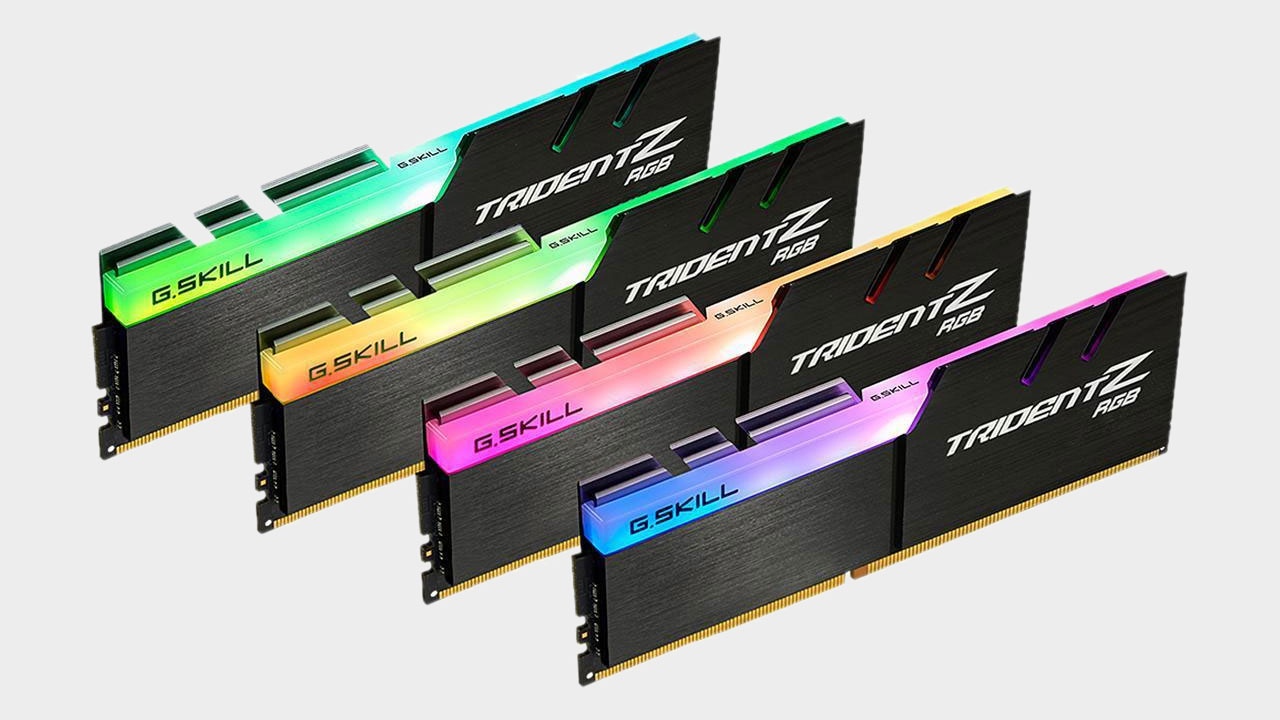DDR4 memory is becoming more expensive ahead of the DDR5 era
A market research firm says PC DRAM prices could jump by as much as 28 percent this quarter.

Buying RAM is all about timing. No, not timings, as in latencies—well, that too—but when you actually pull the trigger on a new memory kit. Pricing fluctuates over time, and more recently has been trending upwards. Unfortunately, it doesn't look like DDR4 memory prices will be falling in the near future, and instead are on track to rise by as much as 28 percent this quarter, according to TrendForce.
There are different numbers at play here. The market research firm had previously predicted a quarterly spike in pricing to the tune of 13-18 percent. However, after observing price increases across a wide spectrum of DRAM products—DDR3, DDR4, mobile memory, graphics DRAM, and especially server RAM—TrendForce revised its forecast for the overall DRAM market, and now says pricing across the board will jump 18-23 percent this quarter.
It's worse when zeroing in on PC DRAM, rather than also factoring into the equation memory pricing for smartphones, tablets, graphics cards, and so forth. Looking strictly at PCs, TrendForce is predicting a 23-28 percent sequential rise in DRAM prices.
This is largely due to an uptick in the production of laptops. According to TrendForce, the second quarter is typically the peak period for notebook production. Adding to that, TrendForce says Covid-19 "vaccination rates remain relatively low across the globe," which means remote education and working from home will further drive up demand for laptops.
TrendForce is not playing the part of Chicken Little and telling us the sky is falling when everything is actually fine. Its own price tracking shows that the average selling price of 8GB DDR4-2666 modules already jumped 25 percent from last quarter to this one, exceeding its previous forecast of "nearly 20 percent." And if we look at price histories ourselves, we see similar trends.
For example, the top selling DDR4 memory product on Amazon is a 16GB kit of Corsair Vengeance LPX DDR4-3200. It's currently listed for $103, shipped and sold from Amazon (as opposed to a marketplace seller). If we plug the URL into CamelCamelCamel, an excellent resource for tracking pricing on Amazon products, we see the same kit sold for around $78 just three months go. That's a 32 percent increase.

Best CPU for gaming: the top chips from Intel and AMD
Best graphics card: your perfect pixel-pusher awaits
Best SSD for gaming: get into the game ahead of the rest
If we go back six months, the lowest price was $63. So the same kit of RAM now costs around 63 percent more than it did 24 weeks ago. And in case anyone is wondering, it hit a low of $58 in September 2020. In a span of seven months, pricing on this particular kit has gone up more than 77 percent.
Keep up to date with the most important stories and the best deals, as picked by the PC Gamer team.
Not every kit has seen such a big increase in pricing, though higher costs are the norm. For example, G.Skill's 16GB Ripjaws V DDR4-3200 ranks No. 8 on Amazon's list of best selling memory and currently sells for $89, compared to $78 three months ago, and $60 six months ago. That still amounts to a 48 percent rise at the high end.
This just adds to the tragic state of PC building in 2021, with a silicon shortage affecting the availability and cost of critical components, like graphics cards and certain CPUs. Things might not return to normal until Intel's Alder Lake and AMD's Zen 4 processors land, by which time the DDR5 era will officially begin.
Paul has been playing PC games and raking his knuckles on computer hardware since the Commodore 64. He does not have any tattoos, but thinks it would be cool to get one that reads LOAD"*",8,1. In his off time, he rides motorcycles and wrestles alligators (only one of those is true).


